News
iHorror Sọrọ Apes & Cinema Pẹlu Aami-eye-Gurus Dan Lemmon & Gino Acevedo

Dan Lemmon. Photo by Frazer Harrison – 2015 Getty Images – Image courtesy gettyimages.com & IMDb.com
Interview With Award Winning Weta Visual Effects Supervisor Dan Lemmon
Ryan T. Cusick: Hey Dan! How are you?
Dan Lemmon: I am good, how are you?
PSTN: I am doing pretty good, thanks for taking my call. Can you tell me what your background was before you were involved with digital effects?
D.L.: I was a student before, and I grew up loving movies especially Sci-Fi, Action effects kind of movies. Movies of all kinds. When I was a kid I did not get a chance to go to the movies much, my family didn’t have a lot of money. During the summer time, they had a program, and you can go and buy a book of movie tickets, I think it was basically a way to keep the kids occupied. Myself along with a few of the neighborhood kids would go down to the theater, and there would be all kinds of different screenings, some better than others. Every once in awhile you would get Awọn Goonies, tabi ET, some of those hallmark classic movies from the 80s’. Indiana Jones was another, and that film was a controversial one for me because my parents didn’t want me watching it but we snuck in and saw it anyway [Laughs].
PSTN: That is awesome! I love hearing stories like that. [Laughs]
D.L.: It was a really special thing when we got to see a movie. When I got into high school, I had a friend that felt the same way. On the weekends we would spend our time making our short little films with our 8mm video camera. My friend had a little sound mixing desk that we would use, and he went on to become an animator, he was a really talented artist. He was an animator and storyboard artist on The Simpsons for years and years, and I am over here in New Zealand making visual effects.
PSTN: Was there ever any movie that ever “spoke,” to you and you said to yourself, ‘This is what I want to do?”
D.L.: I was crazy about Star Wars just like about every other boy my age. I was pretty young when Empire came out. I had seen Empire and the original on VHS at slumber parties. I can remember when Jedi came out. For like a year leading up to the release that is all my friends and I could talk about, Pada ti Jedi and we were so excited when it first came out. It was the coolest thing ever; there was no disappointment I did not feel let down at all, I enjoyed every minute of it, that was a big one. As I got a little bit older and I was in high school, two films had a significant impact. One was Terminator 2; I was a big Stan Winston fan already. When 2 Terminator came out that was game changing in terms of the marriage of practical effects and these new digital effects; it was just mind boggling the imagery that was created. The next year was Egan Jurassic, and that was the film for me that made me say “that is what I want to do.” All I wanted to do was to make creatures.
PSTN: I can remember seeing Jurassic Park for the first time, I was like twelve or thirteen, and seeing the 1st dinosaur on screen was just amazing, and definitely a game changer.
D.L.: Yes, [Excitingly] and with the John Williams score, the film opens up and you are dropped into this meadowy area, and then there is a giant reveal, and there are brontosauruses and they’re just there, and it doesn’t look like stop motion. You look back on the film now, and you can see a few things that you would do differently with the advanced technology, but I still think so much of it holds up so well.
PSTN: I agree and the same with 2 Terminator it is a timeless piece, and I think it holds up just as well.
D.L.: I think that there is some charm to the rough edges, I love Ghostbusters and the way that you can put a story together, using the tools that they had available as long as the execution within that framework is competent. There is a certain amount of disbelief that you have walking into a theater anyway, sitting in a dark room with a bunch of other people pretending it is real life, even if it is theater, the sets aren’t real and time is compressed, there are just a lot of things that you accept. I think that with effects the bar continues to get raised higher and higher, there is less that the audience has to fill in with their mind. In some ways, a really good story-teller uses the audience’s minds to fill in the blank. How many times have you watched a monster movie and you have been totally hooked and then when the monster is revealed it turns out to be utterly disappointing? Something happens inside your head that in some ways is so much richer and more evocative than explicitly painting the whole picture and I think those are the hallmarks of a terrific storyteller is to leave those gaps and have the audience to ask good questions and to fill in the blanks themselves.
PSTN: Most definitely. You are right; storytelling does revolve around letting the person watching the film create the monster in their mind, and yeah I have been disappointed before [Laughs]. For Planet ti Awọn inaki can you explain the process of capturing an actor’s performance and then replacing him or her with an Ape?

Ogun fun aye ti awọn Apes (2017) Courtesy of 20th Century Fox & bnlmag.com

Ogun fun aye ti awọn Apes (2017) Courtesy of 20th Century Fox & bnlmag.com
D.L.: Yeah, the idea in many ways is similar to a traditional prosthetic creature. You are using an actor to drive a character, and you are just changing the appearance of an actor. This is one of the things that we set out to do when making Aye ti awọn Apes; it was a tradition that we really wanted to honor with the original 1968 Aye ti awọn Apes. John Chambers, he won an award for makeup before there was even an Academy Award for makeup, they invented a special category just for his work on that movie. It wasn’t until about thirteen years later that they officially made a makeup category, so that is pretty remarkable. The idea that you take an actor like Roddy McDowall you put him in a chair and you apply prosthetics and appliances and extensive makeup, and suddenly they would be changed into this creature that does not look anything like Roddy McDowall. It has its own appearance that the audience will respond to differently than they would if it was a human actor. The more that he looks like an Ape, the more of a response from the audience. We definitely want to honor that tradition. One of the challenges, when we set out to make the first movie Rise it, was intended to be an origin story it aimed to tell the story of where these super intelligent apes came from. At the beginning of the movie, they had to appear indistinguishable from the apes that you would see in a documentary or zoo. Unfortunately with humans in a suite even with the best makeup, it is tough to get them to look 100% real. The body proportions of chimpanzees and humans are so different. Chimpanzees arms are so much longer, and their legs are so much shorter, and the way that the head is attached to the torso and just the physical strength and the proportions of the rest of the body is so much different we thought we could make them much more realistic by creating the characters digitally. We still wanted actors to drive those characters, and it was something that we had a lot of success with in the past with Andy Serkis in creating Gollum. He brought so much to that role. If he had been just doing the voice in a booth, it would have been an entirely different thing. Having an actor present in the scene, working with the other actors to refine the scene, working with the director to refine the performances everybody just does a better job when you can get everyone in the room acting with each other at the same time.
nipasẹ Oluwa ti Oruka, King Kong, ati paapa Afata we used this technology called motion capture and then we kind of extended it to where we call it performance capture, which is recording everything that an actor does with their body and does with their face as they do it and then taking that recording and applying it to a digital character. Normally it happens with a dedicated place, basically like a sound stage, you’ve got a lot of equipment, banks of computers, you’ve got sixty cameras or so – special motion capture cameras that only see invisible infrared light. You rig up the actors in a way that they have little dots, they are reflective dots and those little reflectors reflect infrared lights from the cameras back to the cameras. The cameras see little white dots moving around on the black background and all the cameras compare what it knows about all of the white dots on the black background and the computer reconstructs dots moving in 3D space.
Through a process, we take a puppet that we have built that matches the actor’s portions and we fit that puppet to those dots, so now we have a digital puppet of the actor moving around the same way that those dots are moving. There is also a process called retargeting where we take that actors movement on their puppet and we apply it to a puppet that matches the character that they are playing. In the case of Caesar Andy Serkis’s movement on the puppet and we are applying it to the Caesar puppet that has longer arms and shorter legs, and that is what the retargeting process is all about.

Ogun fun aye ti awọn Apes (2017) Courtesy of 20th Century Fox & bnlmag.com

Ogun fun aye ti awọn Apes (2017) Courtesy of 20th Century Fox & bnlmag.com
There is a certain movement that we do not pick up that is part of the performance capture process, like finger and toe animation, that stuff we have to add in manually, keyframe it. There is a lot of editing that the animators often have to do in order to refine the data and make it look 100% correct. Facial animation is a huge thing, we have some tools that help analyze. We paint this funny little dots on the actor’s face along with a little camera that attaches to their helmet and it records how those dots move around. The computer can only give us so much information on what those dots mean in terms of facial expression and it requires those trained eyes and hands of facial animators to go in and dial in those particular facial expressions and make them look as much like Andy Serkis doing his acting on that day. That is a real skill and that is something those girls and guys get better and better at as they do more and more of that kind of work.
On The Planet of the Apes movies we wanted to move off of the dedicated sound stage and take that technology on location out onto a working movie set and that was a whole other engineering and procedural pipeline figuring out process where we had to figure out how to take a system that normally fits into a giant room with lots and lot of computers that can take up to several weeks to setup and we had to figure out how to make it portable and set it up on a working movie set in a manner of 15-20 minutes.
PSTN: That is amazing. How many people were on your team?
D.L.: On a large capture day we probably have about 30 crew on set. I would say half a dozen of those are our common visual effects presence. We’ve got data wranglers, reference photographers, myself as visual effects supervisor, producers, a few of these traditional roles.
PSTN: Thank you so much for speaking with me today it was truly a pleasure, and I hope that we can do it again in the future.
D.L.: The pleasure was all mine.
Atunwo 'Ogun Abele': Ṣe O tọ Wiwo?
Tẹle ikanni YouTube tuntun wa "Awọn ohun ijinlẹ ati awọn fiimu" Nibi.

Movies
'Oku buburu' Fiimu Franchise Ngba Awọn fifi sori ẹrọ Tuntun MEJI
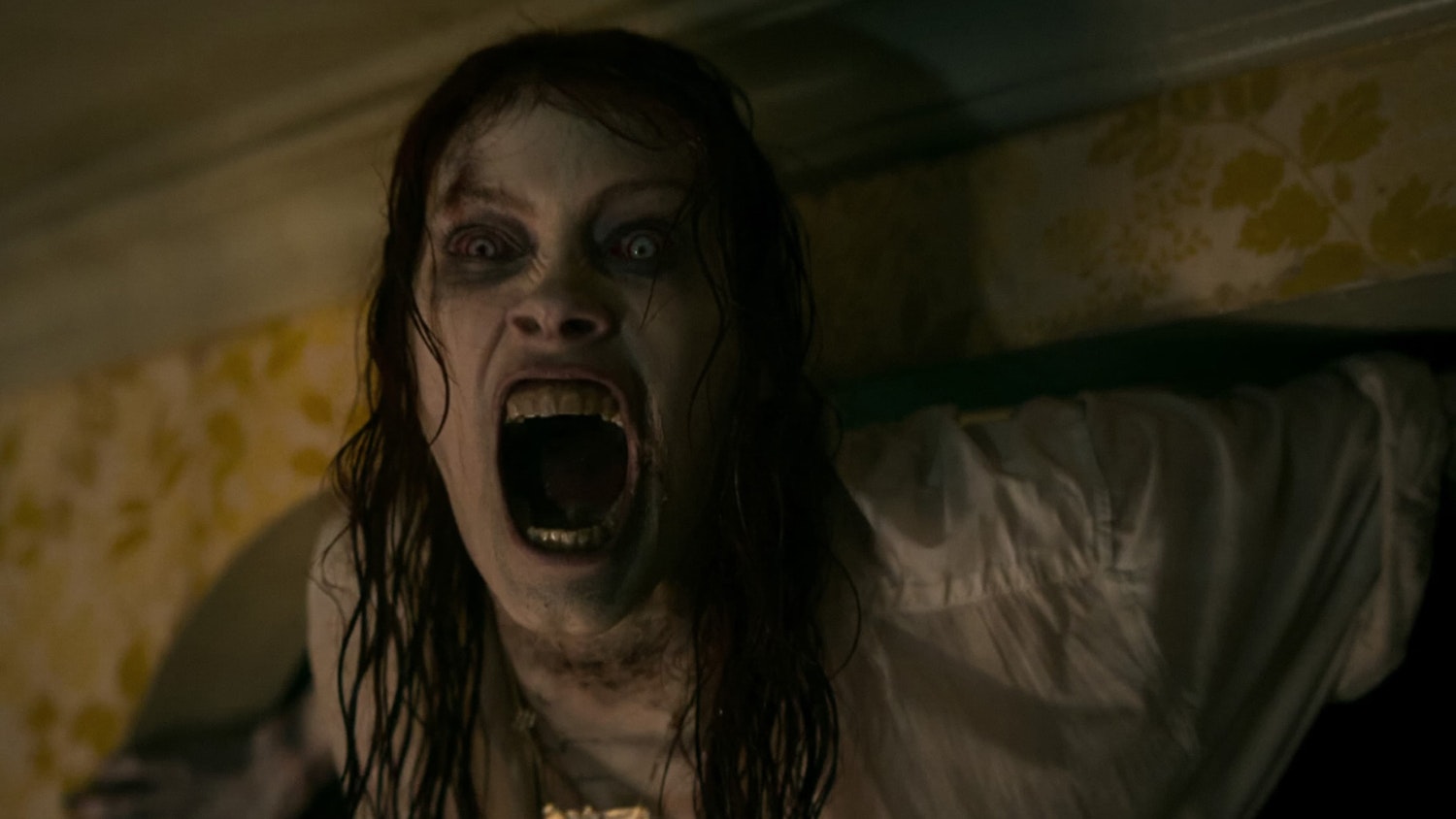
O jẹ eewu fun Fede Alvarez lati tun atunbere Ayebaye ibanilẹru Sam Raimi Awọn Buburu .kú ni ọdun 2013, ṣugbọn eewu yẹn san ni pipa ati bẹ naa ni atẹle ti ẹmi rẹ Buburu Deadkú Buburu ni 2023. Bayi Ipari ti wa ni iroyin ti awọn jara ti wa ni si sunmọ ni, ko ọkan, ṣugbọn meji alabapade awọn titẹ sii.
A ti mọ tẹlẹ nipa awọn Sébastien Vaniček fiimu ti n bọ ti o lọ sinu Agbaye Deadite ati pe o yẹ ki o jẹ atẹle to dara si fiimu tuntun, ṣugbọn a gbooro iyẹn Francis Galluppi ati Ẹmi House Awọn aworan ti wa ni n kan ọkan-pipa ise agbese ṣeto ni Raimi ká Agbaye orisun ni pipa ti ẹya ero ti Galluppi pàgọ́ sí Raimi fúnra rẹ̀. Ilana yẹn ti wa ni ipamọ labẹ ipari.

"Francis Galluppi jẹ itan-akọọlẹ kan ti o mọ igba lati jẹ ki a duro ni ẹdọfu simmer ati nigba ti yoo kọlu wa pẹlu iwa-ipa ibẹjadi,” Raimi sọ fun Ipari. "O jẹ oludari ti o ṣe afihan iṣakoso ti ko wọpọ ni iṣafihan ẹya rẹ."
Ẹya yẹn jẹ akọle Iduro ti o kẹhin Ni Yuma County eyi ti yoo tu silẹ ni itage ni Ilu Amẹrika ni Oṣu Karun ọjọ 4. O tẹle olutaja irin-ajo kan, “ti o wa ni ibi isinmi ti igberiko Arizona kan,” ati “ti a fi si ipo igbelegbe nla kan nipasẹ dide ti awọn adigunjale banki meji ti ko ni aibalẹ nipa lilo iwa ika. - tabi tutu, irin lile-lati daabobo ọrọ-ini ẹjẹ wọn.
Galluppi jẹ oludari awọn kukuru kukuru ti o gba ẹ̀bun sci-fi/ẹru ti awọn iṣẹ iyìn rẹ pẹlu Ga aginjù apaadi ati The Gemini Project. O le wo ni kikun satunkọ ti Ga aginjù apaadi ati awọn Iyọlẹnu fun Gemini Ni isalẹ:
Atunwo 'Ogun Abele': Ṣe O tọ Wiwo?
Tẹle ikanni YouTube tuntun wa "Awọn ohun ijinlẹ ati awọn fiimu" Nibi.
Movies
'Ọkunrin alaihan 2' Wa “Súnmọ́sí Ju Tí Ó Tii Rí rí” Láti Ṣẹlẹ̀

Elisabeth Moss ninu gbolohun ọrọ ti a ti ronu daradara so ninu ibere ijomitoro fun Idunnu Ibanujẹ Daru ti o tilẹ nibẹ ti ti diẹ ninu awọn eekaderi oran fun a ṣe Eniyan Airi 2 ireti wa lori ipade.
Adarọ ese ogun Josh Horowitz beere nipa awọn Telẹ awọn-soke ati ti o ba Moss ati oludari leigh whannel wà eyikeyi jo si wo inu a ojutu si nini o ṣe. Moss sọ pẹlu ẹrin nla kan pe “A sunmọ wa ju ti a ti lọ tẹlẹ lọ si fifọ rẹ. O ti le ri rẹ lenu ni 35:52 samisi ni isalẹ fidio.
Whannell lọwọlọwọ wa ni Ilu Niu silandii yiyaworan fiimu aderubaniyan miiran fun Agbaye, Wolf Man, eyiti o le jẹ sipaki ti o tanna imọran Agbaye Dudu ti o ni wahala ti ko ti ni ipa kankan lati igba igbiyanju Tom Cruise ti kuna lati ji dide. Mummy.
Paapaa, ninu fidio adarọ ese, Moss sọ pe o wa ko ni Wolf Man fiimu ki eyikeyi akiyesi pe o ni a adakoja ise agbese ti wa ni osi ni air.
Nibayi, Universal Studios wa ni agbedemeji ti iṣelọpọ ile haunt ni ọdun kan ni Las Vegas eyi ti yoo ṣe afihan diẹ ninu awọn ohun ibanilẹru cinematic Ayebaye wọn. Ti o da lori wiwa, eyi le jẹ igbelaruge ile-iṣere nilo lati gba awọn olugbo ti o nifẹ si awọn IPs ẹda wọn lẹẹkan si ati lati gba awọn fiimu diẹ sii ti o da lori wọn.
Iṣẹ akanṣe Las Vegas ti ṣeto lati ṣii ni ọdun 2025, ni ibamu pẹlu ọgba-itura akori to dara tuntun wọn ni Orlando ti a pe Apọju Agbaye.
Atunwo 'Ogun Abele': Ṣe O tọ Wiwo?
Tẹle ikanni YouTube tuntun wa "Awọn ohun ijinlẹ ati awọn fiimu" Nibi.
News
Jake Gyllenhaal's Thriller 'Presumed Innocent' Series Ngba Ọjọ Itusilẹ Tete
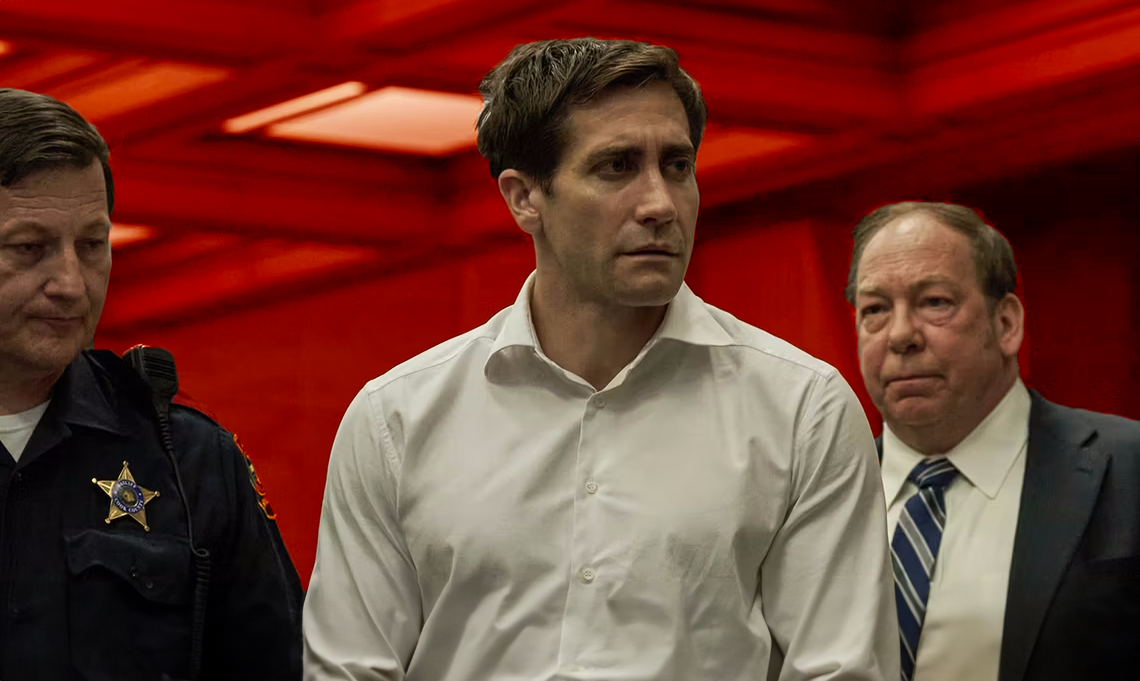
Jake Gyllenhaal ká lopin jara Ti a ro pe Alaiṣẹ n silẹ lori AppleTV+ ni Oṣu Karun ọjọ 12 dipo Oṣu Karun ọjọ 14 bi a ti pinnu ni akọkọ. The Star, ẹniti Ile Ipagbe atunbere ni o ni mu adalu agbeyewo lori Amazon NOMBA, ti wa ni wiwonu esin awọn kekere iboju fun igba akọkọ niwon rẹ hihan loju Ipaniyan: Aye lori Ita ni 1994.
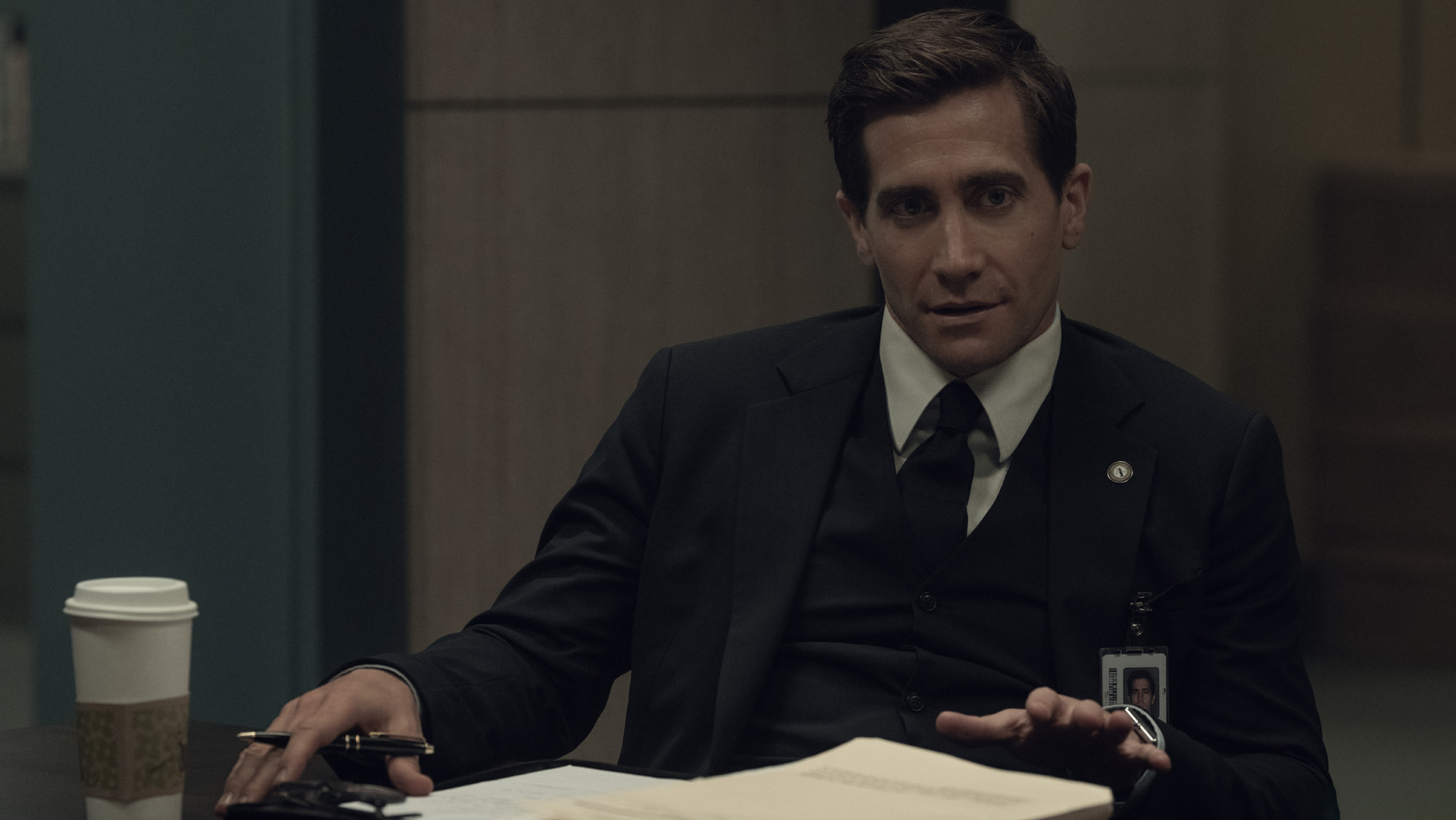
Ti a ro pe Alaiṣẹ ti wa ni iṣelọpọ nipasẹ David E. Kelly, JJ Abrams 'Búburú Robot, Ati Warner Bros. O jẹ aṣamubadọgba ti fiimu 1990 Scott Turow ninu eyiti Harrison Ford ṣe agbẹjọro kan ti n ṣe iṣẹ meji bi oluṣewadii ti n wa apaniyan ẹlẹgbẹ rẹ.
Awọn iru awọn ere onifẹẹ wọnyi jẹ olokiki ni awọn ọdun 90 ati nigbagbogbo ni awọn ipari lilọ ninu. Eyi ni trailer fun atilẹba:
Gẹgẹ bi ipari, Ti a ro pe Alaiṣẹ ko jina si ohun elo orisun: “…awọn Ti a ro pe Alaiṣẹ jara yoo ṣawari aimọkan, ibalopọ, iṣelu ati agbara ati awọn opin ifẹ bi ẹni ti a fi ẹsun naa n ja lati di idile ati igbeyawo papọ. ”
Up tókàn fun Gyllenhaal ni awọn Guy Ritchie movie ti akole Ninu Gray se eto fun itusilẹ ni Oṣu Kini ọdun 2025.
Ti a ro pe Alaiṣẹ jẹ jara ti o lopin iṣẹlẹ mẹjọ ti a ṣeto lati sanwọle lori AppleTV+ ti o bẹrẹ ni Oṣu Karun ọjọ 12.
Atunwo 'Ogun Abele': Ṣe O tọ Wiwo?
Tẹle ikanni YouTube tuntun wa "Awọn ohun ijinlẹ ati awọn fiimu" Nibi.
-

 News6 ọjọ ago
News6 ọjọ agoAtilẹba Blair Witch Cast Beere Lionsgate fun Awọn iṣẹku Retroactive ni Imọlẹ Fiimu Tuntun
-
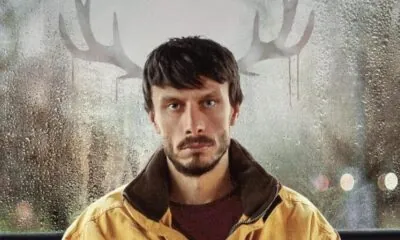
 News4 ọjọ ago
News4 ọjọ agoBoya Scariest, Julọ Disturbing jara ti Odun
-
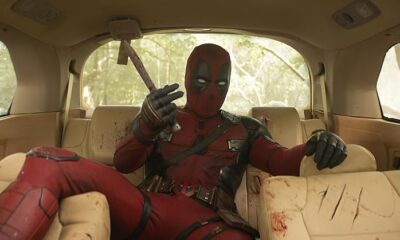
 Movies5 ọjọ ago
Movies5 ọjọ agoTitun F-bombu Ti o ni ẹru 'Deadpool & Wolverine' Trailer: Bloody Buddy Movie
-
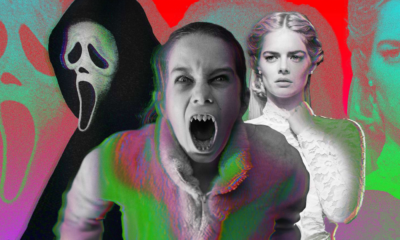
 awọn akojọ4 ọjọ ago
awọn akojọ4 ọjọ agoIdunnu ati Ibanujẹ: Ṣiṣe ipo awọn fiimu 'Ipalọlọ Redio' lati Imọlẹ itajesile si O kan itajesile
-

 News5 ọjọ ago
News5 ọjọ agoRussell Crowe Lati Star ni Fiimu Exorcism miiran & Kii ṣe Atẹle kan
-

 Movies5 ọjọ ago
Movies5 ọjọ ago'Ọjọ Awọn oludasilẹ' Nikẹhin Ngba itusilẹ oni-nọmba kan
-
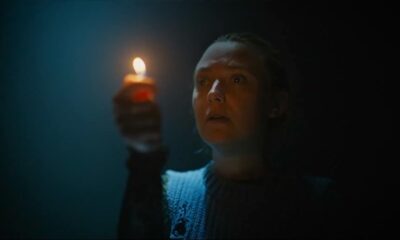
 Movies5 ọjọ ago
Movies5 ọjọ agoTirela 'Awọn oluṣọ' Tuntun Ṣafikun Diẹ sii si Ohun ijinlẹ naa
-
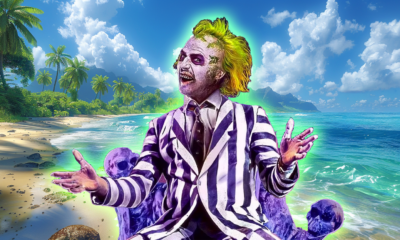
 Movies4 ọjọ ago
Movies4 ọjọ agoAtilẹba 'Beetlejuice' Atẹle naa Ni ipo ti o nifẹ si
























O gbọdọ wọle lati firanṣẹ asọye kan Wo ile